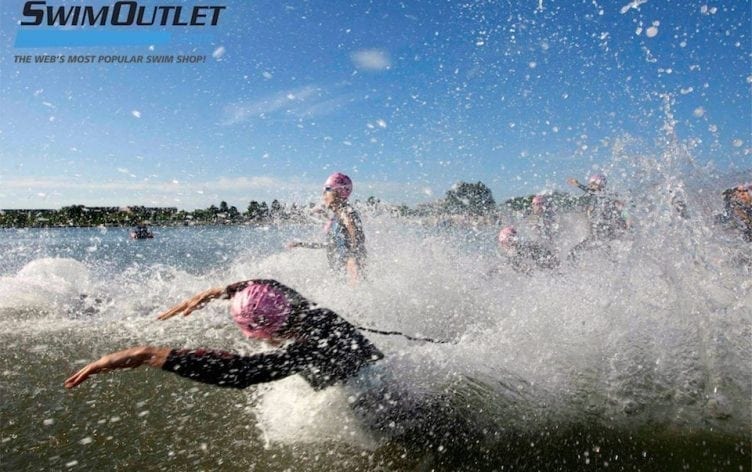
Luckily for triathletes like me, we only swim one stroke during races. Instead of perfecting all four strokes, we only need to master freestyle. Although learning butterfly, backstroke, and breaststroke will help you work different muscles, if you’re a casual swimmer for fitness the freestyle stroke (a.k.a. the crawl) is all you need. Still, when you rely on one stroke to get from point A to point B, making it more smooth and efficient is key.
Swimming itself is something that is perfected through muscle memory and time in the water—the more each stroke becomes an engrained pattern, the less you need to think about. So for those of you who feel awkward in the water now, don’t worry, you’ll get there!
Since it’s impossible to focus on everything at once, I would suggest working on improving one thing per practice (or per set). From head to toe, here’s what to focus on to become a better swimmer and master the freestyle stroke.
Step #1: Head Position Where your head goes, the rest of your body follows! This applies to every motion you make from walking to biking to swimming. If you move your head to one side your entire body must move to support the weight. The same is true in swimming. By keeping a neutral head position your body is able to stay in a straight alignment. If you tuck your chin or lift your head your torso will move the opposite direction causing drag. Also, if you move your head too much to one side your hips will move out in the other direction.
The best way to work on this is to play around with moving your head in the water. See what happens when you tuck your chin or lift your head. To find a neutral position for your head, look straight down at the bottom of the pool or open water. Sighting while in open water should involve a short head lift up to get your eyes out of the water followed by a return to the neutral head position.
Quick Takeaway: Focus on head positioning—keep it neutral and in line with your body
Step #2: Hand Position & Feel Your hands should enter the water just in front of your head, finger tips first and headed down at about a 25 to 35 degree angle. Coming straight down once your hands enter the water will cause you to lose lots of length in your stroke. On the contrary, coming in too shallow will cause you to glide too far.
Once your arm has extended at that 25 to 35 degree angle you should be in your “catch”—it’s called this because you are almost catching the water. Some coaches suggest using your fingertips for feel, but that’s not the strongest part of your hand, your palms are! Need proof? Try to push up out of the pool only using your fingertips—I’m pretty confident you won’t make it out of the water. Then, try pushing out using your palms. Be sure to press through your palms to engage your stroke.
Quick Takeaway: Hands should enter at 25 to 35 degrees, with palms engaged.
Step #3: High Elbows Once you engage your hands, your elbows should be your pivot point. Your hand should rotate downward while your elbow stays in about the same position until your fingers are pointing at the bottom. At this point you will have the most muscles engaged and your pull will be have much stronger. You can use the same experiment as above to prove this: Try pushing out of the water with a straight arm, versus with your elbows and arms at 90 degrees. One is a bit easier than the other!
Quick Takeaway: After engaging your hands, rotate at the elbow first to bring your fingertips down.
Step #4: Hip & Torso Rotation Your hips and torso are key, because they control what your shoulders do. Hip rotation is very important for swimming as it allows your body to lengthen. Slightly push down on each hip as it rotates while swimming—a little bit of exaggeration and muscle cuing will show how much more length in your stroke you can get with a bit of extra rotation.
Quick Takeaway: Focus on gently pushing each hip on the downbeat to engage and feel rotation.
Step #5: Kicking Many athletes kick incorrectly—they kick from their knees or feet. This is probably because we often think of kicking as a foot-driven action. But in reality, kicking has nothing to do with your feet. Think about kicking a soccer ball: would you stand still and just bend at the knee and kick with your foot? The answer should be no a big NO. A soccer kick, like a swimming kicking, is an action that originates in the core of your body and engages the entire leg.
Try kicking like a whip—think about engaging from the core down, starting from your rib cage, through your hips, upper legs, knees, lower legs, ankles, and finally the feet. Practice with a kickboard by kicking on your side with one arm out and the other by your side.
Quick Takeaway: A kick is a whip involving your entire body—start it from your core, and finish it down at your feet.
Have you been working on your freestyle stroke? Share your thoughts in the comments!

